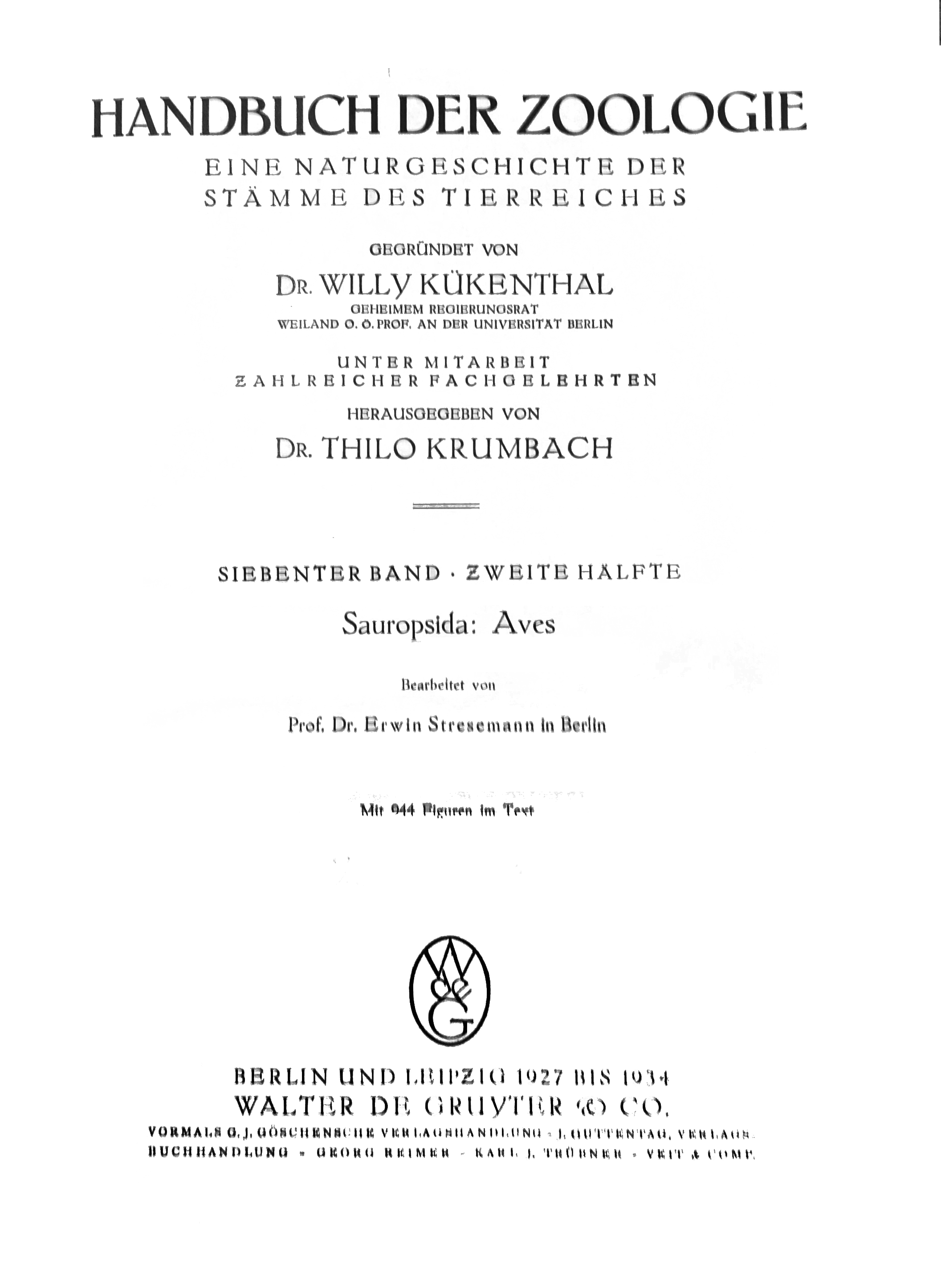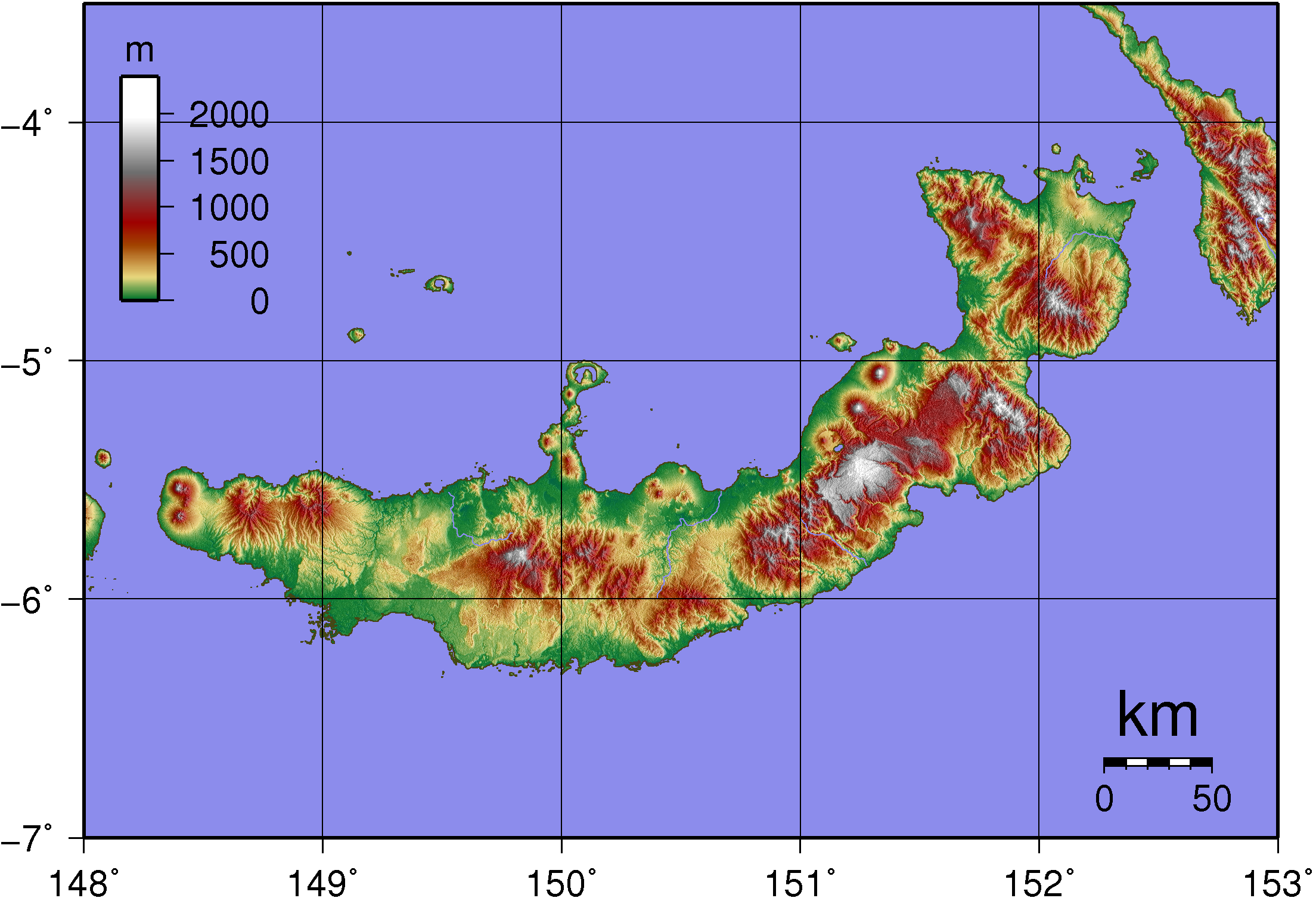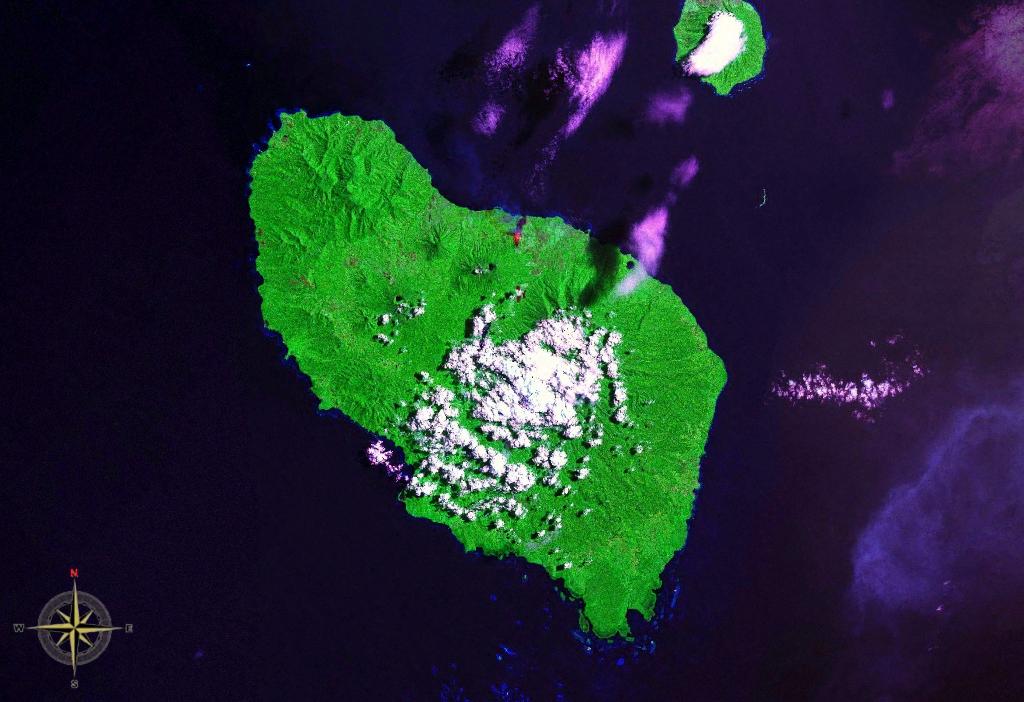|
Bismarck Cicadabird
The Bismarck cicadabird (''Edolisoma remotum'') is a species of bird in the family Campephagidae. It is endemic to islands in the Bismarck Archipelago. It was previously considered to be conspecific with the common cicadabird (''E. tenuirostre''). Four subspecies are recognised: * ''E. r. remotum'' Sharpe, 1878 – New Hanover Island, New Ireland, Dyaul Island (south of northwest New Ireland) and Feni Islands (east of southeast New Ireland; northeast Bismarck Archipelago) * ''E. r. matthiae'' Sibley, 1946 – Mussau Island and Emirau Island (east of Mussau Island, St Matthias Islands, central north Bismarck Archipelago) * ''E. r. rooki'' Rothschild & Hartert, EJO, 1914 – Umboi Island (west of New Britain, southwest Bismarck Archipelago) * ''E. r. heinrothi'' Stresemann, 1922 – New Britain and Lolobau Island (north of east New Britain; southeast Bismarck Archipelago) Its natural habitat is subtropical or tropical moist lowland forest A forest is an ecosystem cha ... [...More Info...] [...Related Items...] OR: [Wikipedia] [Google] [Baidu] |
Richard Bowdler Sharpe
Richard Bowdler Sharpe (22 November 1847 – 25 December 1909) was an English people, English zoologist and ornithology, ornithologist who worked as curator of the bird collection at the British Museum of natural history. In the course of his career he published several monographs on bird groups and produced a multi-volume catalogue of the specimens in the collection of the museum. He described many new species of bird and also has had species named in his honour by other ornithologists including Sharpe's longclaw (''Macronyx sharpei'') and Sharpe's starling (''Pholia sharpii''). Biography Richard was born in London, the first son of Thomas Bowdler Sharpe. His grandfather, Reverend Lancelot Sharpe was Rector of All Hallows Staining. His father was a publisher on Skinner Street and was best known for being the publisher of ''Sharpe's London Magazine'', an illustrated periodical (weekly but monthly from 1847). His care from the age of six was under an aunt, Magdalen Wallace, widow ... [...More Info...] [...Related Items...] OR: [Wikipedia] [Google] [Baidu] |
Emirau Island
Emirau Island, also called Emira, is an island in the Bismarck Archipelago located at . Emira is part of what on many maps are charted as the St Matthias Islands, also known as the Mussau Islands, a small group to the northwest of the main island group of New Ireland. Early explorers named it Squally Island, a name found in some early records. It is part of New Ireland Province, Papua New Guinea. The local language is a dialect of the Mussau-Emira language. World War II Early in World War II this small island became international news when over 500 prisoners from various ships (including RMS ''Rangitane'') sunk by German surface raiders were released following the first attack on Nauru and subsequently rescued by the Australian authorities. Emirau was seized unopposed by two battalions of the United States 4th Marine Division on 20 March 1944. Base development Naval Base Emirau construction activities were taken in hand by the US Navy Seabees of the 18th Construction Regi ... [...More Info...] [...Related Items...] OR: [Wikipedia] [Google] [Baidu] |
Edolisoma
''Edolisoma'' is a genus of birds in the cuckooshrike family Campephagidae that are native to the Central Indo-Pacific region, Australia and New Guinea. Taxonomy These species were previously placed in the genus ''Coracina''. They were moved to the resurrected genus ''Edolisoma'' based on the results of a molecular phylogenetic study published in 2010. The genus ''Edolisoma'' was introduced in 1853 by the French zoologist Jacques Pucheran with the type species as ''Campephaga marescotii'' Gray, 1846. This is now considered to be a junior synonym of ''Lanius melas'' Lesson, 1828, the black cicadabird. The name of the genus is derived from the genus ''Edolius'' that had been introduced by the French naturalist Georges Cuvier in 1816. Species The genus contains the following 31 species A species () is often defined as the largest group of organisms in which any two individuals of the appropriate sexes or mating types can produce fertile offspring, typically by sexual repro ... [...More Info...] [...Related Items...] OR: [Wikipedia] [Google] [Baidu] |
Forest
A forest is an ecosystem characterized by a dense ecological community, community of trees. Hundreds of definitions of forest are used throughout the world, incorporating factors such as tree density, tree height, land use, legal standing, and ecological function. The United Nations' Food and Agriculture Organization (FAO) defines a forest as, "Land spanning more than 0.5 hectares with trees higher than 5 meters and a Canopy (biology), canopy cover of more than 10 percent, or trees able to reach these thresholds ''in situ''. It does not include land that is predominantly under agricultural or urban use." Using this definition, ''Global Forest Resources Assessment (FRA), Global Forest Resources Assessment 2020'' found that forests covered , or approximately 31 percent of the world's land area in 2020. Forests are the largest Terrestrial ecosystem, terrestrial ecosystems of Earth by area, and are found around the globe. 45 percent of forest land is in the Tropical forest, trop ... [...More Info...] [...Related Items...] OR: [Wikipedia] [Google] [Baidu] |
Habitat
In ecology, habitat refers to the array of resources, biotic factors that are present in an area, such as to support the survival and reproduction of a particular species. A species' habitat can be seen as the physical manifestation of its ecological niche. Thus "habitat" is a species-specific term, fundamentally different from concepts such as Biophysical environment, environment or vegetation assemblages, for which the term "habitat-type" is more appropriate. The physical factors may include (for example): soil, moisture, range of temperature, and Luminous intensity, light intensity. Biotic index, Biotic factors include the availability of food and the presence or absence of Predation, predators. Every species has particular habitat requirements, habitat generalist species are able to thrive in a wide array of environmental conditions while habitat specialist species require a very limited set of factors to survive. The habitat of a species is not necessarily found in a ge ... [...More Info...] [...Related Items...] OR: [Wikipedia] [Google] [Baidu] |
Lolobau Island
Lolobau Island is an island in the Bismarck Sea, within the West New Britain Province of the Islands Region, in northern Papua New Guinea. During World War II a number military actions occurred near Lolobau Island including in early 1943. For example, on May 3, 1943 B-24 Liberator of the United States 5th Air forces attacked shipping near the island. Lolobau Island is home to the Lolobau Volcano. It is recorded as having erupted in the 20th century. Geography It is a volcanic island of the Bismarck Archipelago group. It is located just north of New Britain island in the archipelago. Ulawun is an active volcano across the strait from Lolobau Island. See also * * *List of volcanoes in Papua New Guinea This is a list of active and extinct volcanoes in Papua New Guinea. New Guinea Admiralty Islands Bougainville D'Entrecasteaux Islands New Britain New Ireland Offshore islands References * Volcanoes of the World Ex ... References Exter ... [...More Info...] [...Related Items...] OR: [Wikipedia] [Google] [Baidu] |
Erwin Stresemann
Erwin Friedrich Theodor Stresemann (22 November 1889, in Dresden – 20 November 1972, in East Berlin) was a German naturalist and ornithologist. Stresemann was an ornithologist of extensive breadth who compiled one of the first and most comprehensive accounts of avian biology of its time as part of the ''Handbuch der Zoologie'' (Handbook of Zoology). In the process of his studies on birds, he also produced one of the most extensive historical accounts on the development of the science of ornithology. He influenced numerous ornithologists around him and oversaw the development of ornithology in Germany as editor of the ''Journal für Ornithologie''. He also took an interest in poetry, philosophy and linguistics. He published a monograph on the Paulohi language based on studies made during his ornithological expedition to the Indonesian island. Early life Stresemann was born in Dresden to Richard, an apothecary and Marie. His grandfather Theodor owned the ''Zum Roten Adler'' pharma ... [...More Info...] [...Related Items...] OR: [Wikipedia] [Google] [Baidu] |
New Britain
New Britain () is the largest island in the Bismarck Archipelago, part of the Islands Region of Papua New Guinea. It is separated from New Guinea by a northwest corner of the Solomon Sea (or with an island hop of Umboi Island, Umboi the Dampier Strait (Papua New Guinea), Dampier and Vitiaz Straits) and from New Ireland (island), New Ireland by St. George's Channel (Papua New Guinea), St. George's Channel. The main towns of New Britain are Rabaul/Kokopo and Kimbe. The island is roughly the size of Taiwan. When the island was part of German New Guinea, its name was Neupommern ("New Pomerania"). In common with most of the Bismarcks it was largely formed by volcanic processes, and has active volcanoes including Ulawun (highest volcano nationally), Langila, the Garbuna Group, the Sulu Range, and the volcanoes Tavurvur and Vulcan (volcano), Vulcan of the Rabaul caldera. A major eruption of Tavurvur in 1994 destroyed the East New Britain provincial capital of Rabaul. Most of the to ... [...More Info...] [...Related Items...] OR: [Wikipedia] [Google] [Baidu] |
Umboi Island
Umboi (also named Rooke or Siassi) is a volcanic island between the mainland of Papua New Guinea and the island of New Britain. It is separated from New Britain by the Dampier Strait, and Huon Peninsula and New Guinea by the Vitiaz Strait. It has an elevation of . The Siassi Archipelago lies off the southeast coast of Umboi Island (a total of 18 islands, only seven are inhabited). History During the mid-1920s, the population of the Siassi Islands was a little over 700 people. It had more than doubled (to almost 1700 people) by the early 1960s, and then decreased to a little more than 1600 people by the early 1980s. In 1936 a Lutheran mission was established on the island which was headed by Pastor P.H Freund. in 1940 Freund was recruited by Lt. Commander Eric Feldt of the Royal Australian Navy to act as a Coastwatcher. During 1943 the island was briefly occupied by 500 Japanese troops from the 51st Reconnaissance Regiment which was commanded by Col. Jiro Sato. By early Dece ... [...More Info...] [...Related Items...] OR: [Wikipedia] [Google] [Baidu] |
Ernst Hartert
Ernst Johann Otto Hartert (29 October 1859 – 11 November 1933) was a widely published German ornithologist. Life and career Hartert was born in the Free and Hanseatic City of Hamburg on 29 October 1859. In July 1891, he married the illustrator Claudia Bernadine Elisabeth Hartert in Frankfurt am Main, Germany, with whom he had a son named Joachim Karl (Charles) Hartert, (1893–1916), who was killed as an English soldier on the Somme. Together with his wife, he was the first to describe the blue-tailed Buffon hummingbird subspecies (''Chalybura buffonii intermedia'' Hartert, E & Hartert, C, 1894). The article ''On a collection of Humming Birds from Ecuador and Mexico'' appears to be their only joint publication. Hartert was employed by Walter Rothschild, 2nd Baron Rothschild as ornithological curator of Rothshild's private Natural History Museum at Tring, in England from 1892 to 1929. Hartert published the quarterly museum periodical ''Novitates Zoologicae'' (1894–39) wi ... [...More Info...] [...Related Items...] OR: [Wikipedia] [Google] [Baidu] |
Walter Rothschild, 2nd Baron Rothschild
Lionel Walter Rothschild, 2nd Baron Rothschild, Baron de Rothschild, (8 February 1868 – 27 August 1937) was a British banker, politician, zoology, zoologist, and soldier, who was a member of the Rothschild family. As a Zionist leader, he was presented with the Balfour Declaration, which pledged United Kingdom, British support for a Jewish national home in Palestine (region), Mandatory Palestine. Rothschild was the president of the Board of Deputies of British Jews from 1925 to 1926. Early life Walter Rothschild was born in London as the eldest son and heir of Emma Louise von Rothschild and Nathan Rothschild, 1st Baron Rothschild, an immensely wealthy financier of the international Rothschild financial dynasty and the first Jewish Peerage, peer in England. The eldest of three children, Walter was deemed to have delicate health and was educated at home. As a young man, he travelled in Europe, attending the University of Bonn for a year before entering Magdalene College, Cam ... [...More Info...] [...Related Items...] OR: [Wikipedia] [Google] [Baidu] |
St Matthias Islands
The St Matthias Islands (also known as the Mussau islands) are a small archipelago group of islands in the Bismarck Archipelago, in northern Papua New Guinea. They are within New Ireland Province. Geography There are at least 10 islands. The largest and most northerly is Mussau. To the southwest of Mussau are: Eloaua, Emananus, Boliu, Emussau, Ebanalu, Ekaleu, and a few smaller isles. To the east of Mussau are: Emirau, and further east is Tench Island. The islands have been designated as an Endemic Bird Area by Birdlife International BirdLife International is a global partnership of non-governmental organizations that strives to conserve birds and their habitats. BirdLife International's priorities include preventing extinction of bird species, identifying and safeguarding i .... References Archipelagoes of Papua New Guinea Bismarck Archipelago New Ireland Province {{PapuaNewGuinea-island-stub ... [...More Info...] [...Related Items...] OR: [Wikipedia] [Google] [Baidu] |






